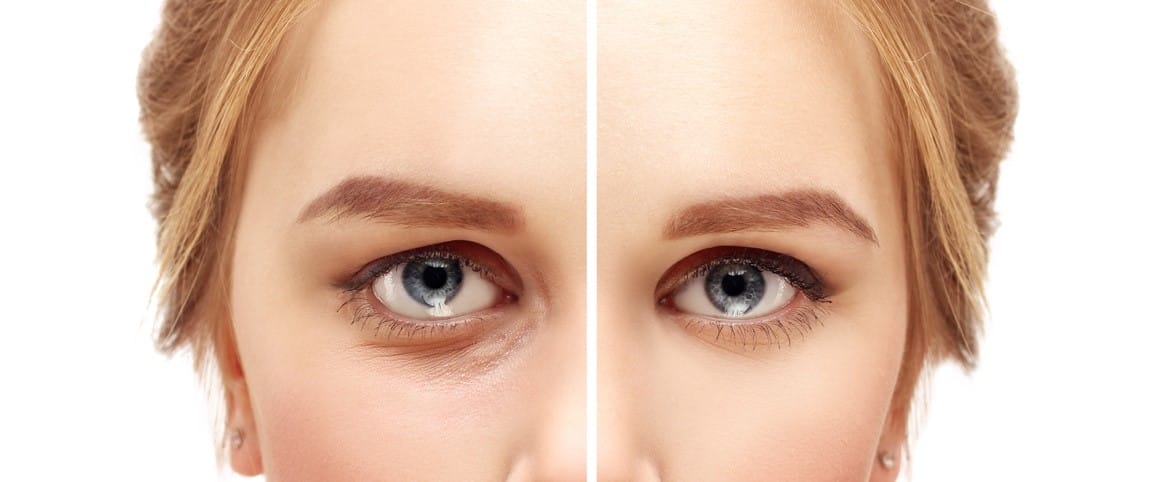Facial rejuvenation defies the effects of aging
It seems to happen all at once: one morning you wake up and see your mother – or even your grandmother – staring back at you in the mirror.
Aging is inevitable, and the first signs you notice on your face happen right on the surface: twin lines between your eyebrows, dark under eye circles, and a collection of extra skin and fat at your jaw. Even your ears stretch a bit longer as the cartilage in them grows. And of course, there are the wrinkles.
These outward changes are caused by seismic moves happening beneath your skin to your facial bones, muscles, and fat as you grow older. Gravity and genetics dictate some of what happens, but two significant factors that speed facial aging are within your control: lifestyle and the environment. Unhealthy behaviors like excessive tanning, smoking, substance abuse, and stress and poor nutrition that cause an imbalance in hormone levels take a toll on a youthful appearance.
But even if you slather your skin in sunscreen and win the genetic lottery, age-related changes in the face can’t be avoided forever. Here’s what you can expect to happen over time:
The bones
Even if you drink enough milk to make your mother proud, bones don’t stay the same as we age. Despite their rigidity, they migrate, lose mass and spur major changes in your face. Facial bone loss can lead to retraction of the jawline, which emphasizes jowls and an unstructured neck. Widening eye sockets give your eyes a more sunken appearance and make you look tired. The angle of the bones beneath the eyebrows decreases, which contributes to frown lines on the forehead, droopy eyelids and crow’s feet at the corner of the eyes.
Mother Nature also pulls off another one of her cruel tricks: Women may start to see these changes occur in young to middle age, but men don’t typically suffer these effects until middle to old age.
The muscles
When bones give way, the muscles follow behind – losing their volume, strength and elasticity. Laxness of facial muscles and loss of muscle mass are two major contributors to facial sagging, especially in the cheeks.
Muscle weakness also causes droopiness around the brow and upper eyelids. It is also a major factor in the dreaded “turkey neck” caused by sagging skin underneath the neck and vertical bands of muscles loosened by gravity and time. The biggest changes typically occur when people are in their 40s and 50s, but they can begin as early as the mid-30s and continue into old age. Even when your muscles are in top working order, they contribute to facial aging with repetitive motions that etch lines in your skin.
The fat
A baby’s face is adorably round and full of pudgy pockets of fat. That facial fat remains evenly distributed throughout your youth, with pockets that prettily plump the forehead, temples and cheeks, as well as areas around the eyes and mouth. Beginning in your mid-40s, however, facial fat starts to lose volume and drifts downward, clumping around your chin, jaw and neck.
Skin that was smooth and tight becomes loose and sagging, and features that once were round may sink. Fat loss also makes skin thinner and more translucent, which can create discolorations as blood vessels just below the surface become more prominent. Even worse, the fat that clusters in the lower half of the face causes jowls around the neck and bagging around the chin.
The Cheeks
Although genetics prompts variations, the cheeks tend to be one the first parts of the face to change as we grow older. Over time, ligaments loosen and fatty tissue begins to drift down, making the cheeks appear flat and hollowed. It appears as if the skin is falling, but it is actually deflating.
The Nose
The connective tissue supporting nasal cartilage weakens as you age, causing the tip of the nose to droop. This can also cause the sides of the nose to collapse inward, making it harder to breathe. The nose can appear bigger and wider as you age as the surrounding areas of the face shrink in volume.
The Eyes
The first signs of facial aging that send people scrambling for a fountain of youth are almost always in the eye area. Eyelid skin is super-thin and can create a heavy, hooded effect when it loosens with time. Muscles in the eye area can also stretch as you grow older, making it difficult to fully open the eyes.
Loss of fat volume where the lower eyelid meets the cheek, combined with thinning skin, creates noticeably dark circles as blood vessels become more visible. Bags and loose skin under the lower lids complete the effect, giving the face a tired, aged look. While the shape and size of the eyes don’t change, differences in the eyelids, forehead and upper cheeks as you grow older can make them appear hollow, dull, and less almond-shaped.
The Lips
Enjoy that pretty pout while you can. Lips begin to lose tone and plumpness as early as your 30s. As you enter your 40s, lines form above your upper lip that deepen as you age, and a loss of definition starts. If you smoke or skipped sunscreen in your youth, you’ll likely see the results in this prominent area first.
The Chin and Jaw
Your chin and jaw are no match for the perfect storm of aging. As fat drifts down from the rest of your face and gathers under your chin and along your jaw, there’s less collagen and elastin to keep the skin taut. At the same time, the neck muscles begin to sag and drag the skin down with it. The result: double chins and jowling.
The Skin
If you’ve ever watched one of those wrinkle time-lapse videos, you know how unsettling it can be to watch facial skin age. Beginning in your 40s, expect to see more wrinkles in your forehead, crow’s feet around your eyes and a deepening of your smile lines. The Environmental Protection Agency asserts that up to 90 percent of visible skin changes attributed to aging are actually caused by the sun. If you were a sun worshipper, your 50s is the time you will likely see the cumulative effects, including a deepening of lines and wrinkles and a significant breakdown of collagen and elastin, which give the skin strength and elasticity. A natural drop in estrogen in women typically occurs in the 50s as well, making skin look and feel dry and causing lines and wrinkles to look deeper and even more prominent.
All of these changes are a natural part of the aging process. But for patients who want to turn back the clock, a board-certified plastic surgeon can give them access to a long list of solutions that recapture a younger version of themselves.
Two minimally invasive facial rejuvenation techniques, Botulinum Toxin and dermal fillers, continue to rank as the most requested cosmetic procedures in the country, with more than 7 million botulinum toxin injections and 2.5 million soft tissue fillers performed in 2016, according to the American Society for Plastic Surgeons 2016 Plastic Surgery Statistics Report. Facelifts, or rhytidectomy, rank as the fifth most popular cosmetic procedure for women and men, with more than 131,000 elected by women and more than 12,000 elected by men in 2016, the ASPS reported.
The choices don’t end there. Other anti-aging procedures can also make patients look naturally refreshed, including eyelid lifts, brow lifts and nose jobs. Facial rejuvenation can be a powerful experience for women and men who aren’t happy with how their faces have aged, restoring confidence and pride in their appearance. A skilled surgeon can help you choose an option that defies the aging process with natural, long-lasting results.
Thomassen Plastic Surgery is the top choice for South Florida patients looking for an award-winning plastic surgeon who provides natural-looking results. Contact us for more information about facial rejuvenation or the many other procedures we offer.
Share this Post

